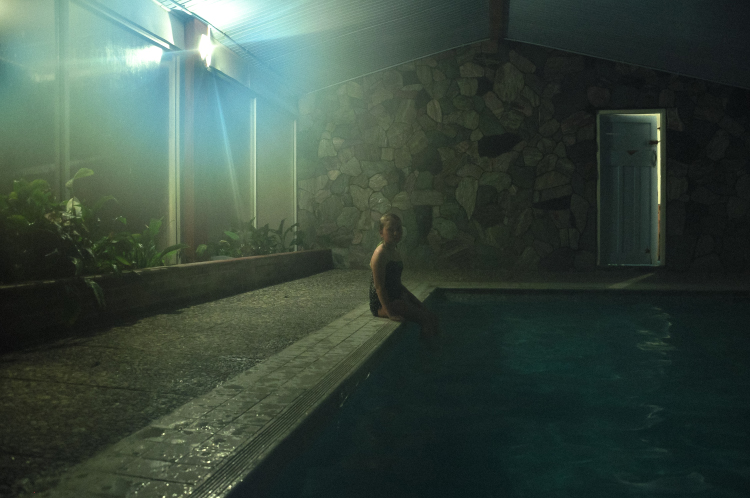The Power of Gravity
Photographs by Tia Ranginui
MILLY MITCHELL-ANYON

TIA RANGINUI Mauri III 2020 Digital photograph
On a clear day in Whanganui you can see Mount Ruapehu glowing in the distance, keeping a watchful eye over the Whanganui River as it makes its way from the mountains to the sea. Tia Huia Ranginui (Ngati Hine Oneone) grew up near Koriniti—one of the settlements dotted along the river. The awa, much like the moon, has its own gravitational pull, eventually drawing Ranginui back from Tamaki Makaurau to Whanganui.
Tia Ranginui’s practice is constantly evolving. In the series The Intellectual Wealth of a Savage Mind (2015), she unpacks some of the ongoing effects of neo-colonialism in New Zealand. These large-scale works are both challenging and exciting. Gazing through an indigenous lens, her practice reflects on the long-standing colonial entanglements within Te Ao Maori; navigating the interplay between these two worlds.
There is a sense, too, that photography is a mechanism for Ranginui to process moments in her life. Hours Between Sleep (2016) documents a period of insomnia and change. We drift through the suburbs of Whanganui in the night, the retro Oasis Motel’s pool becoming its own nocturnal oasis.
Water plays an integral role in Tia Ranginui’s life. When talking about her practice, her explanations are punctuated by memories of being around bodies of water; being on and in the water. Many will be familiar with the recent legislation enacted as part of the 2017 Whanganui Iwi Deed of Settlement that granted the Whanganui River legal personhood status. Although this newfound status under New Zealand jurisdiction might be revolutionary in a western framework, in Te Ao Maori the awa was never considered anything other than a living being.
The work Suburban Melancholy (2015) documents the day the Whanganui River came to visit, breaching the stopbanks and flooding hundreds of houses in the city. The stillness of the water and reflection of the house reminds us that this is the natural order of things. The city was built on a wide floodplain.
Throughout her practice, water manages to seep in. In an era where fresh water is a pressing ecological concern, our own future depends upon addressing the ecological trauma that rivers and sources of fresh water have faced. Ranginui hesitates when she cites the whakatauki ‘Ko au te awa, ko te awa ko au/I am the river, the river is me’ because it has almost become a cliché. But the awa and its mauri is everything; a taonga that is foundational to life and being. From the mist that rises up off the hills to the water that comes out of our taps, water is life and it is living.
Tia Ranginui’s works have their own gravitational pull, a slow tug that gets stronger and stronger the more time you spend with them. Her photographs are steeped in history whilst simultaneously balancing contemporary concerns.

TIA RANGINUI Huria 2019 Digital photograph

TIA RANGINUI Suburban Melancholy 2015 Digital photograph

TIA RANGINUI Oasis Motel (from the Hours Between Sleep series) 2016 Digital photograph

TIA RANGINUI Waikohu 2013 Digital photograph
